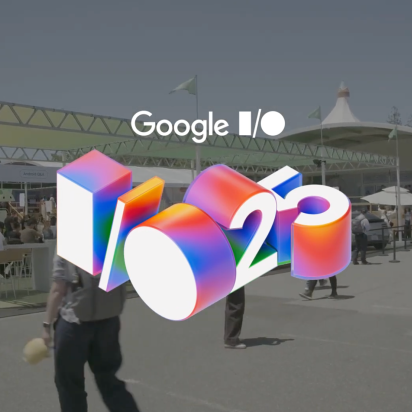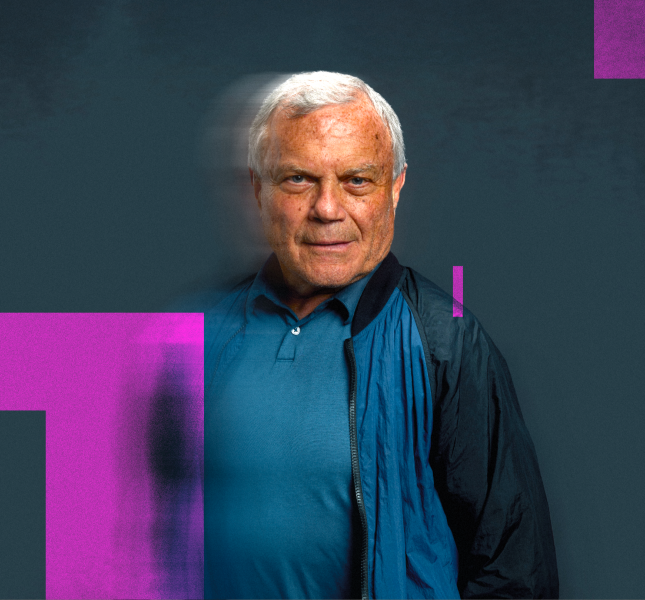(Re)Define Digital Transformation to Test and Learn at Speed
In a post-COVID world where hypergrowth will go from the unicorn story to a key business imperative, the industry will need to redefine digital transformation to a lean, iterative approach that connects the customer decision journey. To succeed in this future, brands must not only pivot their efforts now, but act fast to envision how they will meet the needs of audiences into the future.
Since COVID-19 cases surged globally, we’ve seen several businesses pivot their manufacturing practices at unprecedented speed, from Pernod-Ricard’s hand sanitizer production to Ford’s protective face shields. Both brands’ rapid change in operations demonstrate an urgency to transform with agility. Likewise, many are now realizing the need to transform and adapt digitally—not only in response to the pandemic itself, but also its eventual resolution, with no well-defined window of time between those two moments.
This might sound overwhelming, but the solution is simple if you merely shift your perspective on what digital transformation means during COVID-19: the pandemic doesn’t call for unprecedented change as much as it reinforces and hastens the changes that brands have been trying to implement for the past decade. “Things have not changed as much as they have accelerated,” says Joe Olsen, Chief Growth Officer at MediaMonks. “While other crises reshaped the future, COVID-19 is making the future happen faster,” underscoring the need for digital transformation that had always existed.
Brands can look at Starbucks as an example of this: its app, allowing customers to place an order before visiting stores and make contactless payments allowed the brand to continue enabling pickup orders in the early stages of COVID-19’s spread. On the other end of the pandemic, this contactless, digital infrastructure is likely to provide reassurance to a changed society that aims to limit the spread of germs without sacrificing convenience.
While other crises reshaped the future, COVID-19 is making the future happen faster.

Another brand whose strong digital infrastructure continued to aid consumers’ needs is Nike. Supporting consumers through a digital ecosystem that includes not only ecommerce but also an app dedicated to video workout content led by a network of fitness trainers, Nike experienced lower than expected losses during the worst of COVID-19’s spread in China. In the west, the brand quickly leveraged its expert trainer network to offer weekly livestreamed workouts via YouTube, which MediaMonks helped to produce alongside Wieden+Kennedy in just days before the initial livestreamed event.
Transform at Speed with Lean Strategy and Development
While brands have long understood the need to transform, for many of them the process has seemed lengthy and abstract. Now, brands are quickly understanding the specific actions they must take at speed—compressing the transformation process. “For many brands, digital transformation has been in the back of their minds, and now it’s front and center,” says MediaMonks Founder Wesley ter Haar.
“There will be long-term effects that won’t magically go away once this is ‘over,’” he says. “Think about what this means for your brand, how services are going to change between your products and people, and opportunities to act differently.” Among some of the primary needs are brand ecosystems, access to first party data and truly owning the brand experience.
Brands may be surprised to find that they can make these vast changes faster than they thought possible. “The slowness, overhead, lack of agility the industry is known for has to change much quicker now because you have to play an important part in what’s happening,” says ter Haar. Noticing this need, we’ve eliminated roadblocks to develop a lean strategy and execution process to ensure rapid transformation in just a few weeks.
Here’s how it works. First, brands begin building scenarios and strategizing around the current landscape and where their brand fits within it. “Identify scenarios and changes in social behavior,” says ter Haar, noting how discomfort about flying may persist to further challenge the travel industry, which has been especially hit hard by the pandemic. “Be proactive by thinking about how your brand fits within this new world.”
This helps the brand identify challenges while also approaching their transformation with a sense of purpose. In addition to prioritizing KPIs and identifying requirements and limitations in technology, teams will have to envision how the tech will ultimately be used by audiences.
For many brands, digital transformation has been in the back of their minds. Now it's front and center.

This feeds into the next steps: collecting design and UX insights while importing available data into a backend architecture. This may be the brunt work in planning a new platform, but this “get ready” phase can be done in just a week with UX and tech teams working concurrently. By having both teams work together from the start, you eliminate time wasted on creative ideas that ultimately aren’t practical in a technical sense.
Finally, the team develops, builds and tests for quality assurance before launching—followed by an ongoing test and learn phase to further improve the product or highlight new audience needs. With the proper planning steps in place, brands can move from idea to market in just a month.
Connect Random Acts of Digital to Build Brand Coherence
It’s possible that you’ve already invested in random acts of digital—also known as the siloed and disconnected digital experiences that consumers may encounter at different touchpoints. A simple way to boost digital maturity and prepare for the future is to connect these random acts of digital into a cohesive customer decision journey.
Taking stock in your existing digital strategy is an important step in finding new opportunities to connect with consumers within an uncertain landscape. Again, don’t forget your sense of purpose, either. To accommodate a sense of wanderlust in travelers whose plans had been canceled, for example, Marriott pivoted its content strategy around staycations—including links to its ecommerce platform featuring products that its hotel rooms serve as showrooms for.
In her report, “Best-In-Class Digital Leaders Embrace These Four Guidelines,” Forrester VP, Principal Analyst Sucharita Kodali notes that digital leaders “focus on their core products. While innovation is crucial, much of what the best digital disruptors do is continue to focus on their core product, or ‘keep the lights on’ work.” Minor, iterative tweaks and quality-of-life improvements can ladder up into premier digital experiences.
When owning the consumer journey, you have to have a direct relationship with your audience.

Understanding this, we partner best with brands embarking on digital transformation initiatives that can prioritize speed over perfection. Building on the foundation of your existing digital strategy, look for the simplest (and most effective) changes you can make to carry momentum on the way to larger-term goals. This approach isn’t just about building speed; when prioritizing velocity in the transformation process, rigorously test and measure performance to apply those learnings to successive iterations and phases.
Own the CDJ to Continually Support Audiences
One of the biggest challenges fueling digital transformation is that brands may miss out on the value of engaging with consumers if they rely solely on channels they don’t own, with insights on those interactions lost within walled gardens. Chief to connecting a coherent digital journey is eradicating data silos and building insights driven by first-party data. One need only look at how retail has been affected by COVID-19 to see this in effect.
“If you look at CPG brands who exclusively sell through retail, many of them don’t have a business now,” says ter Haar. “When owning the consumer journey, you have to have a direct relationship with your audience.” He notes that in addition to selling directly to consumers, you also build a more active, ongoing relationship that lays the foundation for when they want to buy further down the road–highlighting the important role that assistive content and digital experiences can take right now while consumers are craving entertainment and connection at home, even if it’s not strictly conversion-based.
While digital transformation has long conjured up the notion of years spent with consultancies that are all talk and no action—and resulting in plans that are obsolete before coming into fruition—it’s easy to see how many brands have viewed the process as a daunting slog. But today, advanced digital maturity is table stakes; and with a need to adapt at speed, brands can act right now on steps that drive fast results.
Related
Thinking
Sharpen your edge in a world that won't wait
Sign up to get email updates with actionable insights, cutting-edge research and proven strategies.
Monks needs the contact information you provide to us to contact you about our products and services. You may unsubscribe from these communications at any time. For information on how to unsubscribe, as well as our privacy practices and commitment to protecting your privacy, please review our Privacy Policy.



